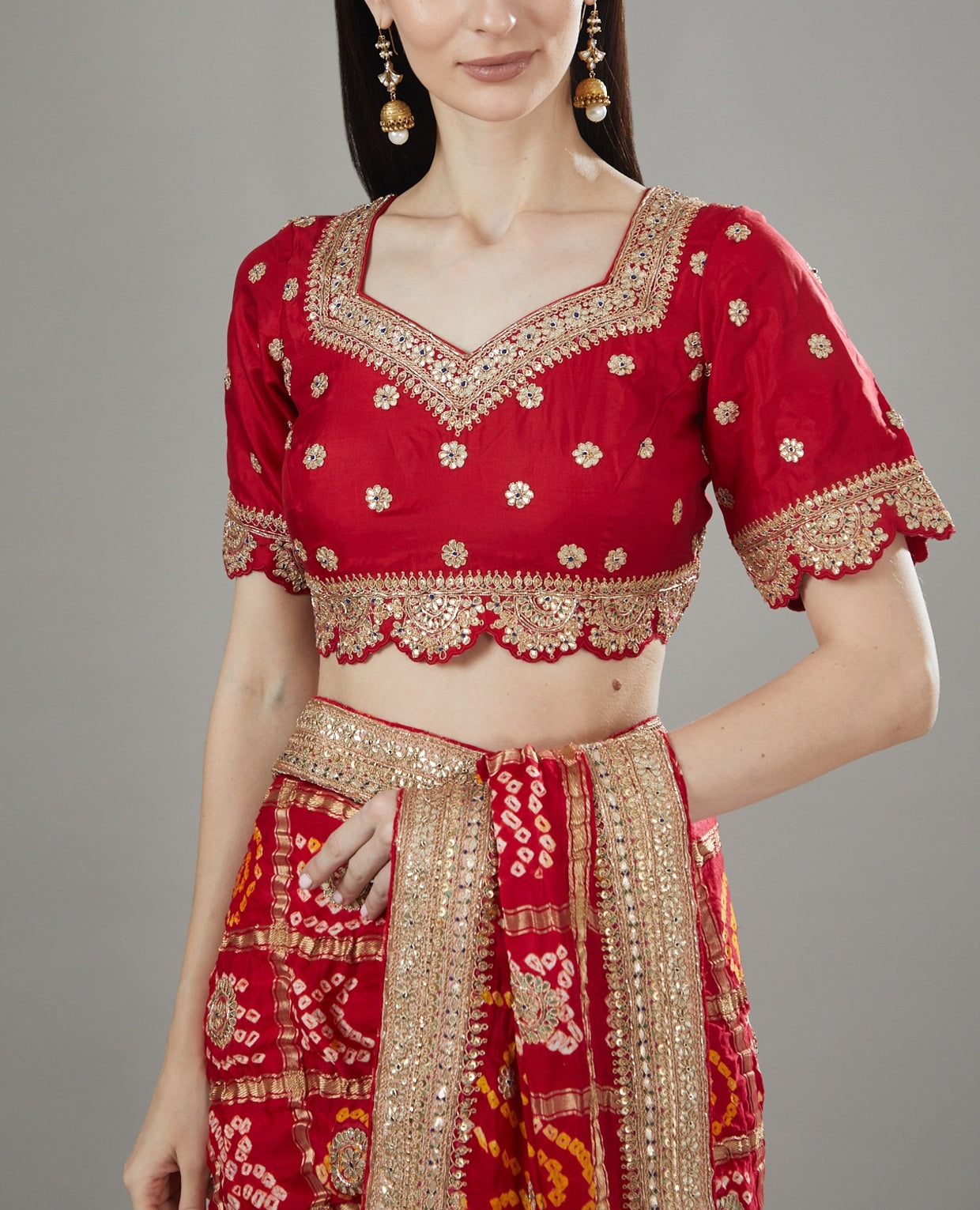
10 Fascinating Facts About Saree We Bet You Didn’t Know About!
Saree is nothing less than a 9-yard long wonder that truly defines the culture, strength, identity, and most importantly the essence of the women of our country. Yes, it may be one of the most popular and commonly used attire in today’s ages but it has its origin from ages.
Thanks to the development of the Indian Textile Industry, a Sari happens to be the first Indian International garment that even attracts foreigners from all around the globe. In this post, we will be discussing 10 interesting facts about sari that’ll leave you amazed.
When it comes to elegance and charm, a woman draped in a saree is the first thing that strikes our minds. Sarees are available in various designs, patterns, colors, fabrics and are now worn across the whole country. On one hand, it can be a traditional garment and on the flip side, it can also be worn as a fashionable, stunning outfit. It is definitely a must-have piece of garment for women without which your wardrobe is certainly incomplete. Don’t you agree?
Yes, we’re sure you must be pretty excited about hearing some interesting facts about saree. So, let’s not waste any further seconds and learn something new today about your most favorite outfit.
#1 Has Its History…
Yes, as we mentioned earlier, a saree has its origin from way back in history. Considering the fact, that a Sari is a traditional garment of India, but did you know it is as old as 5000 years. Shocking, isn’t it? Who would’ve thought that it is centuries old and is still in existence as the most common attire worn across the major parts of the country? Our Vedas mention that it is in existence since the Indus Valley Civilization (3300-1300 BCE). It was then evolved in the Hindu belief and tradition where it was considered as the most “Appropriate attire for women”, Your mind must be buzzed with this crazy culture trip, right?
#2 Can be Draped in 100+ Styles
Did you know it can be draped in more than 100+ ways? Yes, even if you take a close look within our country itself, saree is worn differently in each state or region. In Southern parts of the country, a sari is draped in a unique whereas in north India it is draped in an entirely different fashion and style. As Sari has existence through the many centuries and ages, it left us with a handful variety of draping the wonderful, single piece of garment in more than 100+ styles. In fact, you can wear the same Sari in a different style, pair it with some bold accessories, a different colored blouse and you can entirely revamp your look. And yes, nobody will notice (Do give it a try).
#3 Not Supposed to be “Pinned”
Ready to hear some more shocking yet interesting facts about saree? Well, were you aware that saree is not at all supposed to be “Pinned”? Yes, most of you do use safety pins while draping it, making the creases or plates, or keeping the “Pallu” still on the shoulder or from falling off the shoulder. But in fact, fashion experts recommend that if you drape a Sari in the right manner, there’s absolutely no need for a single pin. Yes, you heard that right. One can easily drape a saree nicely around your body without using pins at all. So, are you willing to try this?
#4 Petticoats or Blouses are NOT a part of Saree
The concept of blouses and petticoats stepped in later and the traditional saree was worn without these accompaniments, just in a way that elegantly hides a women’s modesty. In the Victorian era, women showing chest was not considered a sane activity, and hence a sari was used to wrap the body as moral conduct. So, basically, it was more like a “Cover-up” garment of how women used to hide their bodies. This is how a blouse and a petticoat came into existence, and since then these are considered a part of the whole attire.
#5 Contributes to the Indian Economy
Did you know the mass production of saree around our country at various textile industries supports a major proportion of the Indian economy? A myriad handloom makes across the nation indulge in creating the most beautiful, gorgeous, stunning outfits that you can choose as per your style and preference. So, yes, the production of Sari does contribute to the Indian economy as it provides jobs to many artisans and employees.
#6 PERFECT for Anyone
Whether it’s your college prom party or any other auspicious occasion being celebrated at your home, a saree fits well in every situation, and on anyone who wears it. You can wear it at your workplace, at gatherings, and even at home as a day-to-day garment that keeps you comfortable throughout the day.
#7 Hidden Meanings and Beliefs
Get ready to hear some more interesting facts about saree. Each color, each pattern, each design, and motif has its own hidden meaning and belief. Like, a while colored saree is worn as a sign of mourning by a Hindu widow, whereas a red color is worn by the bride itself and is considered auspicious on occasions. Also, various motifs or designs printed on the fabric have their own hidden meaning. For example, an elephant printed on the border signifies royalty whereas a design of a fish represents fertility and resourcefulness. Hence, each Sari has its own emotions and speaks for itself.
#8 Earlier Known as “Sadi”
Well, yes, “Sadi” is a Prakrit word that was originated from the Sanskrit word “Sati”. The meaning of the word “Sati” is a strip of cloth. Over time, and with ages, it is now being called a “Saree” or a “Sari”.
#9 Minimum Length of a Saree is 4.5 Meters
Yes, shocking, isn’t it? The length of the garment can vary between the range of 4.5-9 meters. The longer the length, the more creative ways to drape it or to pull off your fashion statement.
#10 Holds a Sentiment Value: Sarees are Forever
A Sari does hold an emotional and sentimental value, especially in the Indian culture. They are often looked upon as an object of grace and elegance and have been worn across many passing generations. They are also passed along from one generation to another, as a souvenir of love.
We hope you learned some interesting facts about saree today! What are your views about this 9-yard long piece of wonder? Feel free to share your thoughts with our readers.




